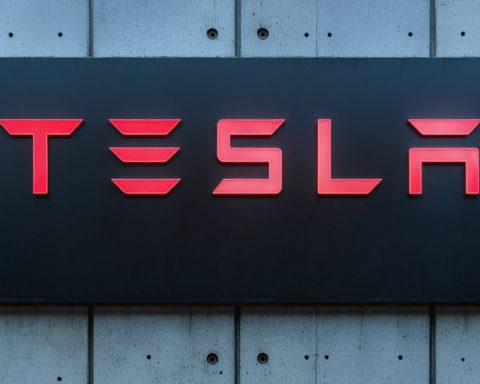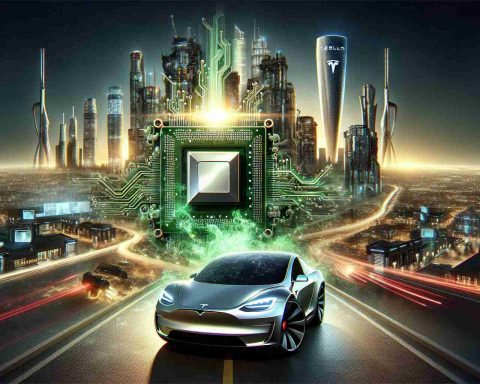- Solid-state batteries are set to transform industries like consumer electronics and electric vehicles (EVs).
- The market for solid-state batteries is projected to grow from USD 125 million in 2024 to USD 1.23 billion by 2032, with a 28.9% compound annual growth rate.
- The surge is driven by the demand for portable and wearable technology requiring miniaturised energy solutions.
- Leading innovators, such as QuantumScape, are advancing new prototypes with improved energy density.
- Solid-state batteries offer benefits like faster EV charging, longer ranges, and enhanced safety compared to traditional batteries.
- Powerful advancements are occurring globally, with North America, Europe, and Asia-Pacific leading the charge.
- The rise of solid-state batteries represents a significant shift towards a more sustainable and efficient future in energy storage.
The future of energy storage is crystallising in the form of solid-state batteries, compact powerhouses that promise to revolutionise industries from consumer electronics to electric vehicles (EVs). A dynamic shift looms on the horizon, as the solid-state batteries market is expected to balloon from a valuation of USD 125 million in 2024 to a staggering USD 1.23 billion by 2032. Such exponential growth, marked by a compound annual growth rate of 28.9%, cannot be overlooked.
Charging the engines of this surge is the insatiable demand for portable, wearable technology—a trend cutting across consumer electronics, healthcare, and industrial applications. Our world is adorned with smartwatches, fitness trackers, and medical monitoring devices, all of which demand miniaturised energy solutions that traditional lithium-ion batteries struggle to provide. Solid-state batteries, with their compact size and robust energy density, are fast becoming the preferred power source.
Cutting-edge advances are being driven by heavyweights like QuantumScape Corporation, which has recently dispatched its Alpha-2 prototype to customers. This sleek prototype surpasses its predecessors in energy density, thanks to innovative cathode design and space-efficient packaging. As industries push the boundaries of what’s possible, these compact cells are set to redefine energy and power expectations.
The transformation isn’t just confined to personal gadgets. The automotive sector is equally enthralled. Solid-state batteries hold the key to the next leap in electric vehicle performance, promising faster charging times, greater travel range, and enhanced safety profiles compared to their liquid-electrolyte predecessors.
Around the globe, regions are racing to harness these advances. Leading markets in North America, Europe, and Asia-Pacific are aggressively pursuing innovations, each striving to dominate the energy landscape of tomorrow. The competitive spirit is fuelled by a rapid pace of product launches and technological breakthroughs, with industry giants like Robert Bosch GmbH, Samsung SDI Co. Ltd., and Toyota Motor Corporation steering the charge.
As we stand on the brink of this electrifying transformation, the key takeaway is clear: solid-state batteries are not merely an enhancement but represent a fundamental shift in how we conceive energy storage. Their rise heralds a more sustainable, powerful, and efficient future, demanding attention from innovators, policymakers, and consumers alike.
The solid-state revolution is more than just a current. It’s a tide, poised to reshape the world. Those who ride it will power the next era of technological evolution.
Solid-State Batteries: Powering a New Era in Energy Storage
Introduction
The future of energy storage is solidified through solid-state batteries—compact power solutions promising to revolutionise industries like consumer electronics and electric vehicles (EVs). Forecasts estimate the solid-state batteries market to soar from USD 125 million in 2024 to USD 1.23 billion by 2032, reflecting an impressive CAGR of 28.9%. This growth is driven by the rising demand for portable and wearable technology, pushing innovation across various domains.
How Solid-State Batteries Work
Solid-state batteries differ from traditional lithium-ion batteries by using a solid electrolyte instead of a liquid one. This change:
– Increases energy density, allowing for longer usage times.
– Enhances safety, reducing the risk of leakage and combustion.
– Supports faster charging and discharging cycles.
Real-World Use Cases
1. Consumer Electronics: The miniaturisation trend in smart devices—such as wearables and IoT gadgets—demands smaller, more efficient batteries. Solid-state batteries fit perfectly into this niche, enabling longer-lasting power and reducing device size.
2. Electric Vehicles: EVs equipped with solid-state batteries can achieve extended ranges, faster charging times, and safer operations compared to those with traditional batteries. By reaching higher energy densities, these batteries can drastically reduce the weight and increase the efficiency of EVs.
3. Medical Devices: Wearable health monitors and implantable medical devices benefit from the compact size and reliability of solid-state batteries, ensuring longer, uninterrupted operation times.
Industry Trends and Market Forecasts
According to industry projections, the market for solid-state batteries is set to expand rapidly:
– Automotive Innovation: Companies like Toyota are at the forefront, racing to incorporate these batteries into their commercial EVs.
– Technology Investment: Giants like Samsung SDI and Robert Bosch GmbH are heavily investing in research and development, targeting breakthroughs in battery technology to secure market leadership.
Challenges and Limitations
Despite their potential, solid-state batteries face hurdles:
– High Production Costs: Manufacturing processes remain complex and expensive, hindering mass production.
– Material Challenges: Developing solid electrolytes that balance conductivity and stability remains a scientific challenge.
– Scaling Up: Transitioning from prototypes to large-scale production demands time and infrastructure investment.
Security & Sustainability
Solid-state batteries offer significant advantages:
– Environmental Impact: Reduced use of flammable materials makes them safer and more environmentally friendly.
– Longevity: Their robust design ensures longer life cycles, producing less electronic waste over time.
Actionable Recommendations
For consumers and businesses eager to harness this technology:
– Stay Informed: Keep abreast of the latest developments and product releases in the solid-state battery arena.
– Evaluate Needs: Consider how these batteries can improve energy efficiency in existing or planned products.
– Engage with Experts: Consult with industry leaders and participate in tech expos to gain insights into implementation strategies.
Conclusion
The rise of solid-state batteries is not just an enhancement; it’s a paradigm shift in energy storage. As technology evolves, staying engaged with the market will enable leveraging this powerful tool effectively. The solid-state revolution is here, promising a more sustainable, powerful, and efficient future.
For more information on upcoming tech trends, visit QuantumScape.













